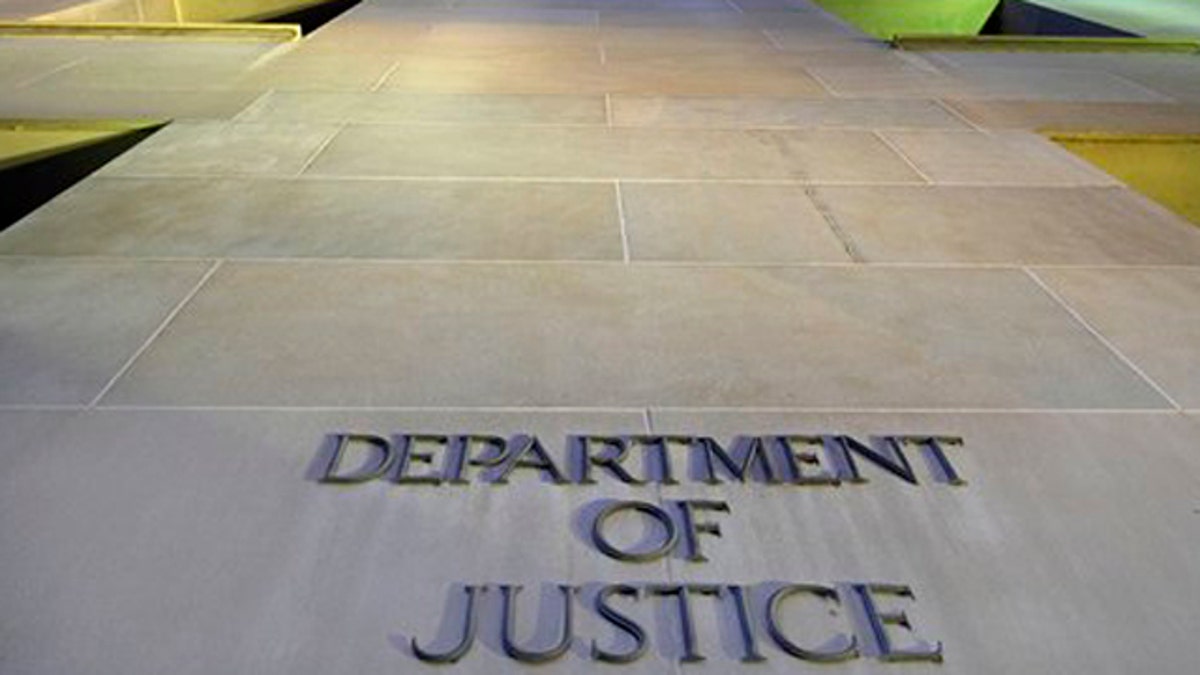
May 14, 2013: The Department of Justice headquarters building in Washington is photographed early in the morning. (AP)
WASHINGTON – The FBI has been using drones to support its law enforcement operations since 2006 and has spent more than $3 million on the unmanned aircraft, the Justice Department's internal watchdog said Thursday.
The disclosure came in a new report by the Justice Department's inspector general, Michael Horowitz, who revealed that the department also has awarded $1.26 million to at least seven local police departments and non-profit organization for drones.
In addition, the IG said another Justice Department component, the Bureau of Alcohol, Tobacco, Firearms and Explosives, plans to use drones to support future operations. To date, the ATF has spent almost $600,000, the IG report stated.
From 2004 to May 2013, the Justice Department spent almost $5 million on the unmanned aircraft.
In June, then-FBI Director Robert Mueller told Congress that the FBI occasionally uses the unmanned aerial vehicles but was developing guidelines in anticipation of issues that will arise "as they become more omnipresent." In one instance earlier this year, the FBI used drones at night during a six-day hostage standoff in Alabama.
The IG's report cited the Alabama case, but no others, saying only that a review of available records showed that the FBI appeared to be operating drones only after obtaining required approvals from the Federal Aviation Administration.
Civilian versions of unmanned military aircraft that have tracked and killed terrorists in the Middle East and Asia are in demand by police departments and border patrol units. Justice Department officials told the IG's office that none of their drones were armed. Law enforcement agencies want drones for a bird's-eye view that's too impractical or dangerous for conventional planes or helicopters to obtain.
The drones purchased by the Justice Department are what the FAA calls "small UAS," unmanned aerial vehicles that weigh up to 55 pounds.
The FBI has said its unmanned aerial vehicles are used only to conduct surveillance operations on stationary subjects. In each instance, the FBI first must obtain the approval of the FAA to use the aircraft in a very confined geographic area.
Two other Justice Department components, the Drug Enforcement Administration and the U.S. Marshals Service, have purchased drones for testing, but said they had no plans to deploy them operationally, the IG's report said. The Marshals service spent $75,000. The DEA acquired its drone from another federal agency at no cost, and said it planned to transfer the craft to another agency. The Marshals Service said it planned to destroy its drones because they were obsolete and no longer operable.
Civil liberties groups critical of domestic drone use say such operations could invade people's privacy. The government worries drones could collide with passenger planes or crash, concerns that have slowed more widespread adoption of the technology.
Regarding potential privacy concerns, both the FBI and ATF told the IG's office they did not believe there was any practical difference between how a drone collects evidence and how that's done by a manned aircraft, the report said.
The FBI told the IG that bureau guidelines require that agents get supervisor approval before conducting any aerial surveillance and comply with aviation laws and policies. As of May, the ATF said it was developing a checklist to guide how drone operators conduct flights.
"These officials did not believe that there was a need to develop additional privacy protocols" for drones, the IG's report said.
Florida, Idaho and Tennessee require that law enforcement agencies obtain a search warrant before using drones for surveillance.
In April, Virginia enacted a two-year moratorium on drone use except in cases of imminent loss of life. Many other state legislatures and municipalities are considering similar measures.
In addition to the money spent by the FBI and ATF, the Justice Department has awarded $1.26 million for drones to at least seven local police departments and non-profit organizations since 2007.
The Justice Department money was used by Eastern Kentucky University, the Sheriff's Association of Texas, the Center for Rural Development in Kentucky, the Gadsden, Ala., Police Department, the Miami-Dade Police Department, the North Little Rock, Ark., police department and the San Mateo County, Calif., Sheriff's Office.
Five of the seven grants were used to buy drones. The awards to Miami-Dade and San Mateo were provided solely to evaluate drones for use in the field.
The drones met with varying success. In 2009, the Gadsden Police Department attempted to use its drone for a surveillance mission. "However, Gadsden Police Department officials stated that during the mission the ground control station lost communication with the unmanned aircraft system, causing the UAS to collide with a tree."
The aerospace industry forecasts a worldwide deployment of almost 30,000 drones by 2018, with the United States accounting for half of them.




